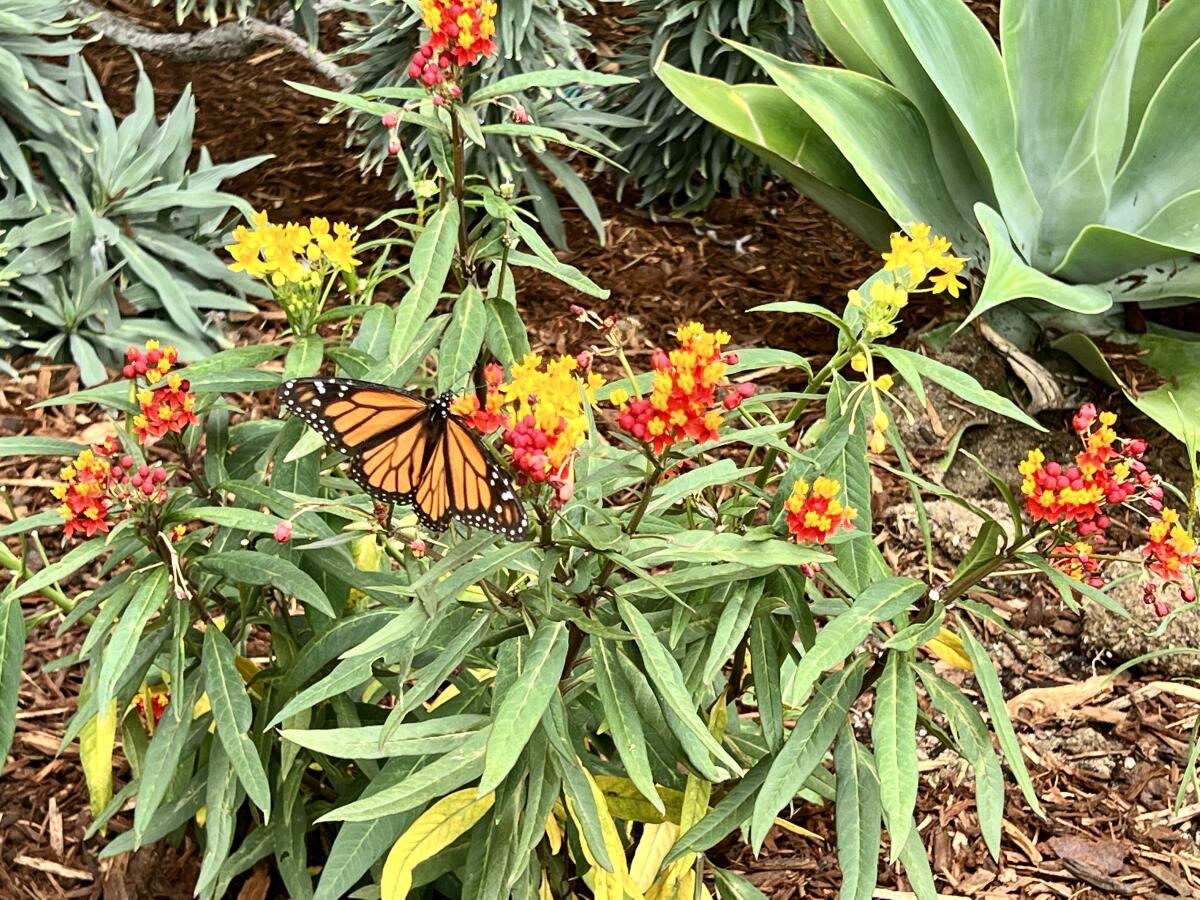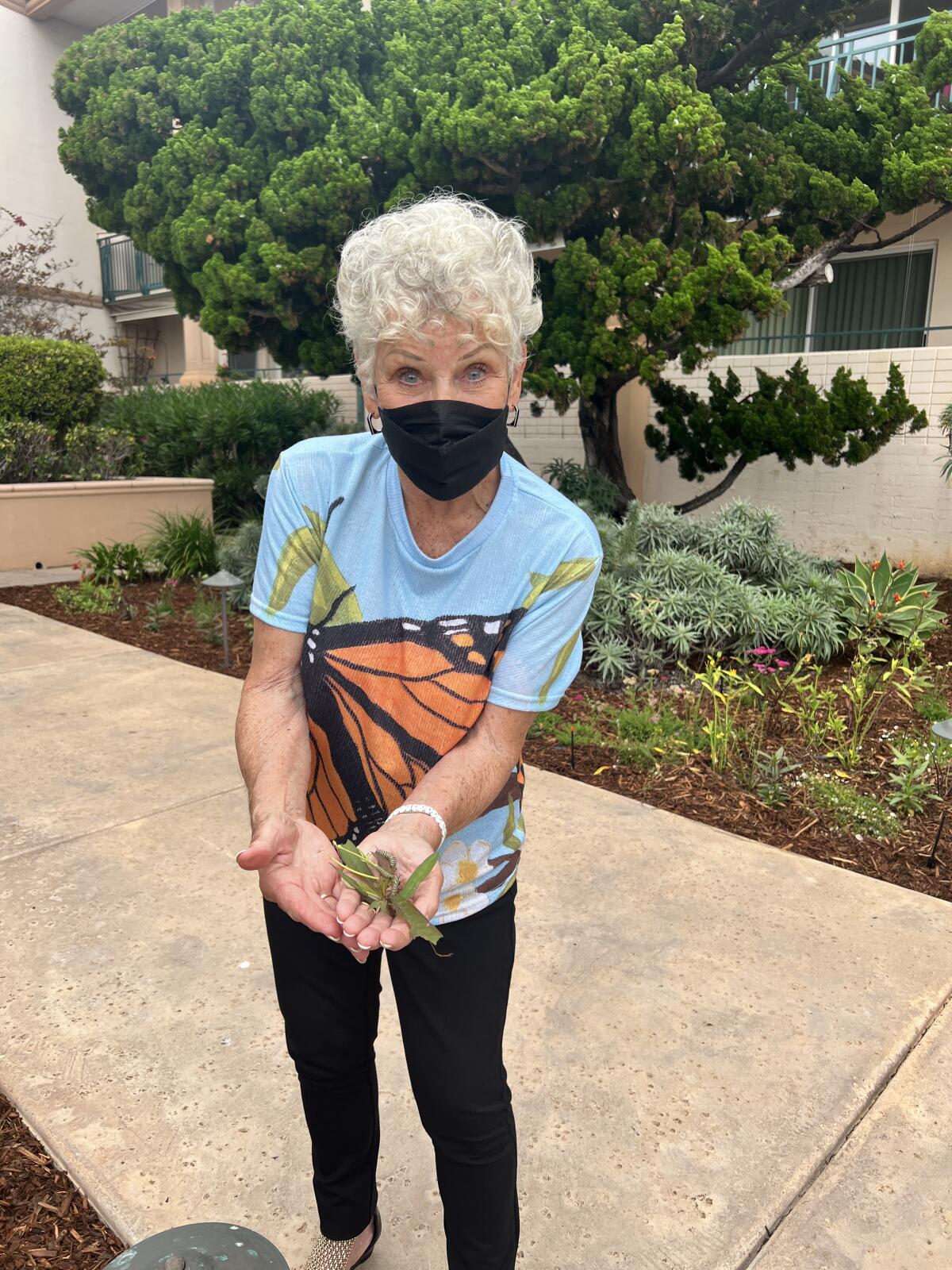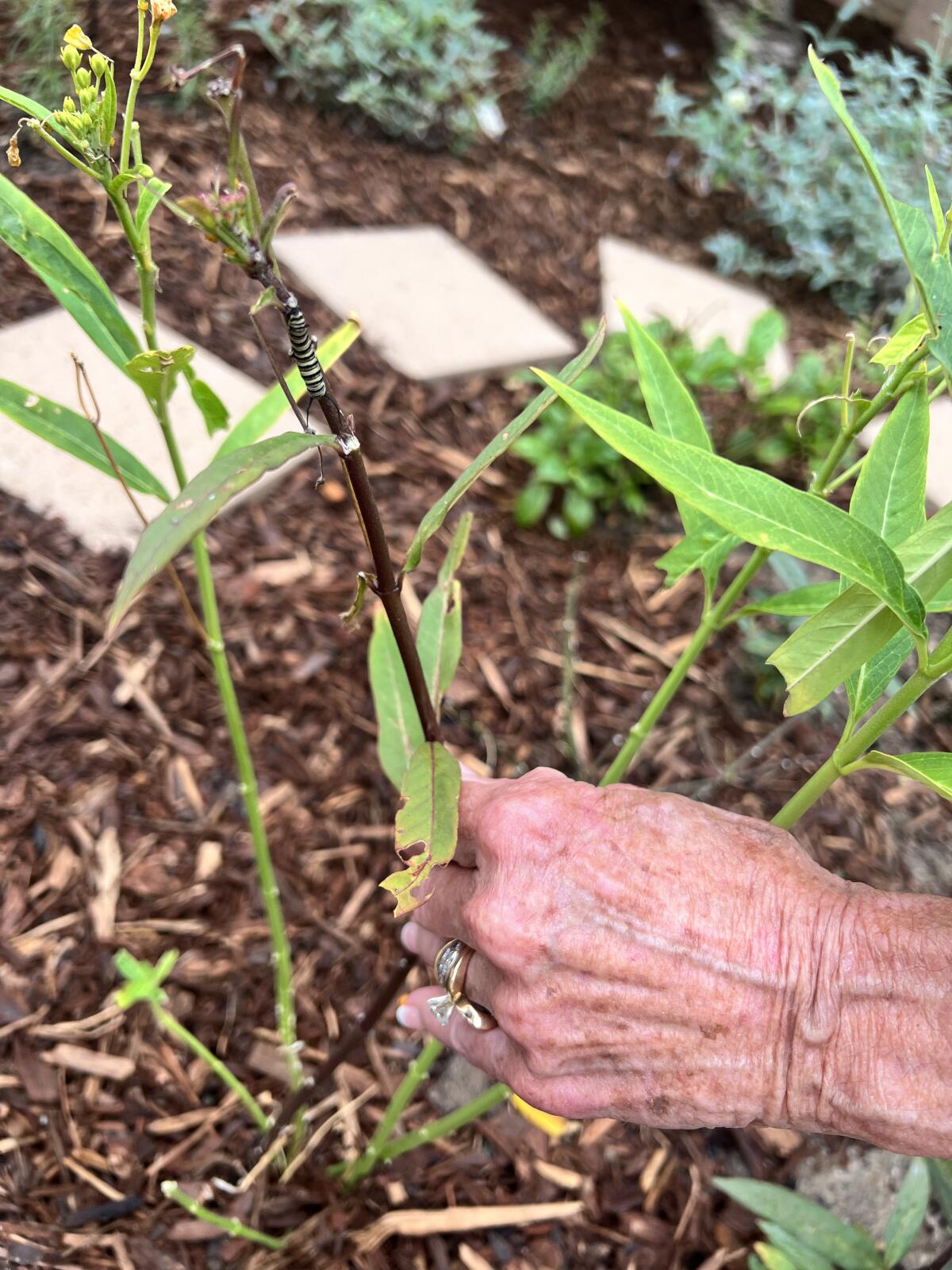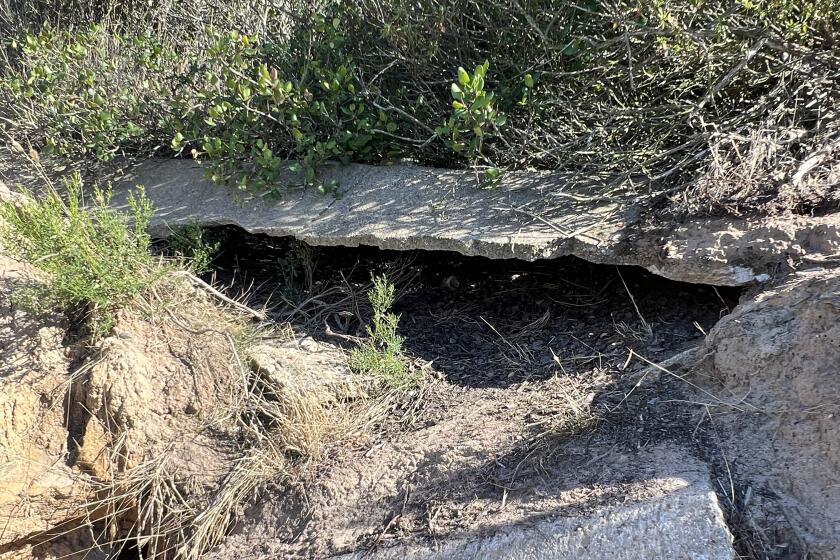La Jolla seniors’ effort takes flight to help monarch butterflies regain their reign

Combating the dimming kaleidoscope of monarch butterflies, a group of concerned senior citizens at the White Sands La Jolla retirement community is continuing its work to increase the local population of the colorful creatures.
So far this monarch breeding season — which generally runs from April through November — the White Sands residents have released more than 200 newly hatched western monarch butterflies into the La Jolla skies. In 2021, they nurtured and released more than 300, according to White Sands resident Carol Studebaker, who heads the monarch project there. (Kaleidoscope, incidentally, is a word for a group of butterflies.)
Migrating monarch butterflies — which include the western monarch that migrates from California to the Rocky Mountains and back, and the eastern monarch, which migrates north-south along the East Coast — were added to the International Union for the Conservation of Nature’s list of endangered species July 21 due to their dwindling numbers.
The group estimates that the population of monarch butterflies in North America has declined anywhere from 22 percent to 72 percent over 10 years, depending on the measurement method.
The United States has not listed monarch butterflies under the Endangered Species Act, though several environmental groups believe they should be.
Get the La Jolla Light weekly in your inbox
News, features and sports about La Jolla, every Thursday for free
You may occasionally receive promotional content from the La Jolla Light.
Emma Pelton of the nonprofit Xerces Society, which monitors the western butterflies, said they are imperiled by loss of habitat and increased use of herbicides and pesticides for agriculture.
The butterflies feed on the milkweed plant, which “agriculture has decided is a pest, which it is,” Studebaker said.
As much of agriculture is monocrop, “they want to eliminate all the milkweed,” she said.
Eliminating milkweed eliminates monarchs, Studebaker said. The butterflies feed on the plant’s nectar and lay their eggs on its leaves. The caterpillars only eat milkweed leaves.

Further nudging the monarch toward extinction are drought and wildfires wiping out habitats, Studebaker said.
“We need monarchs for pollination,” she said. “Butterflies and bees are critical to pollination, as are birds.”
Studebaker and the White Sands Green Committee, established years ago to get seniors involved in environmental issues, added milkweed gardens on residents’ patios last year to help boost the population of western monarch butterflies.

The milkweed plants give the butterflies places to feed and lay eggs in cages to protect them from predators such as wasps, ants and fly larvae.
The eggs hatch into caterpillars, which then make chrysalises and become butterflies ready for flight. The entire process takes about a month, Studebaker said.
Once hatched, the butterflies weigh less than a dollar bill and will migrate about 3,000 miles, she said.
About six months ago, the White Sands administration gave the go-ahead for a monarch butterfly garden to be planted in the community’s courtyard, with different varieties of milkweed such as narrowleaf and tropical.
“Everything here’s been planted to attract them,” Studebaker said, including sunflowers.

Studebaker visits the garden daily, moving caterpillars hatched on milkweed stems to cages on residents’ patios for protection.
She said the residents have been educated about monarchs via different foundations that provide information.
“People want to come in and make a difference,” said Michelle Forbes, White Sands’ director of sales.
The Green Committee has taken on other projects and is currently involved in the CoastSnap beach monitoring program through UC San Diego’s Scripps Institution of Oceanography in La Jolla.
CoastSnap collects photos submitted by residents — a stationary mount for mobile phones is cemented to the White Sands wall overlooking Marine Street Beach — and uses them to track data about sea-level rise.
“We live in sort of an isolated environment,” so projects such as the monarch garden and CoastSnap can help “people who are our age reconnect to nature and look beyond their apartments,” Studebaker said.
“It’s that accumulation of us doing our part and then putting it together and making something worthwhile out of it.”
— The Associated Press contributed to this report. ◆
Get the La Jolla Light weekly in your inbox
News, features and sports about La Jolla, every Thursday for free
You may occasionally receive promotional content from the La Jolla Light.




